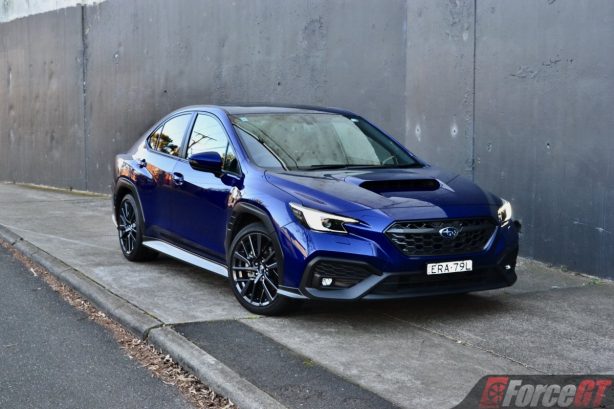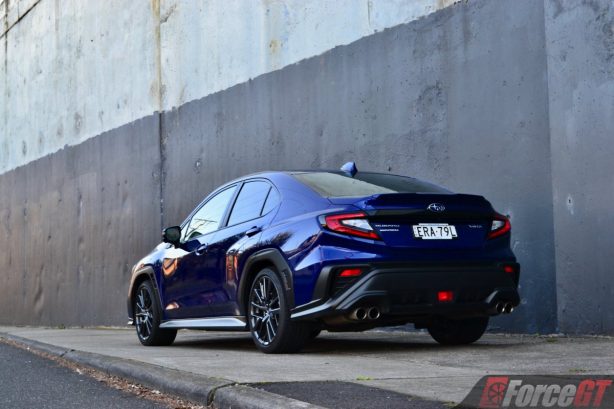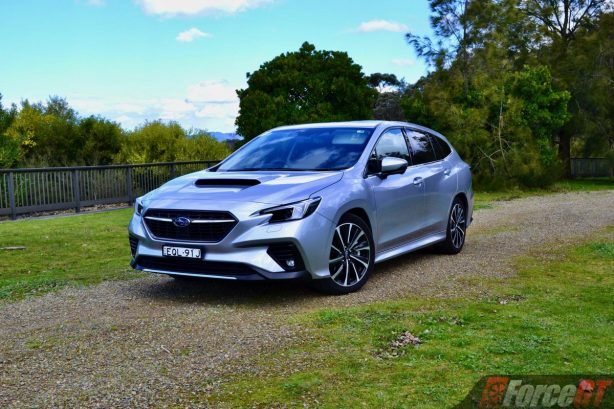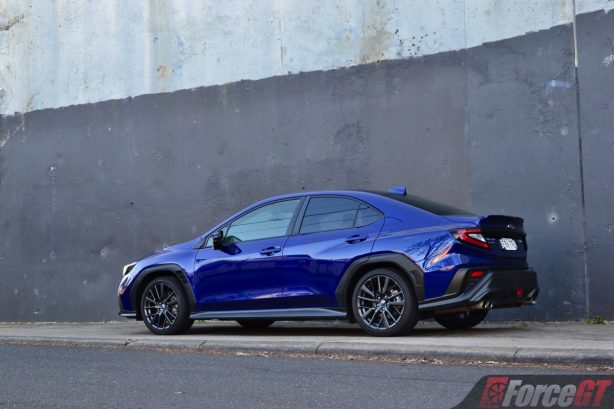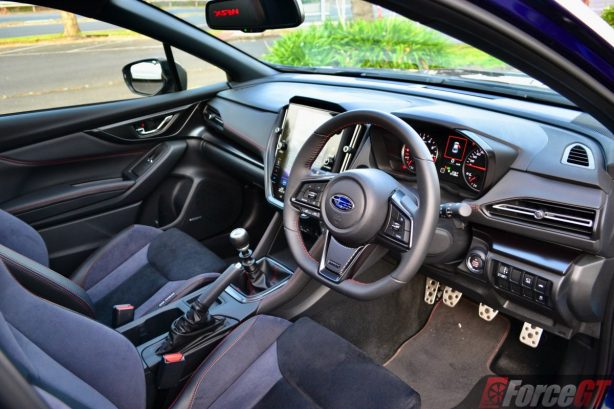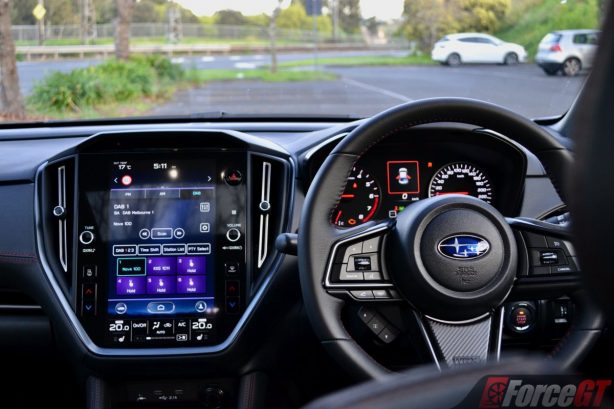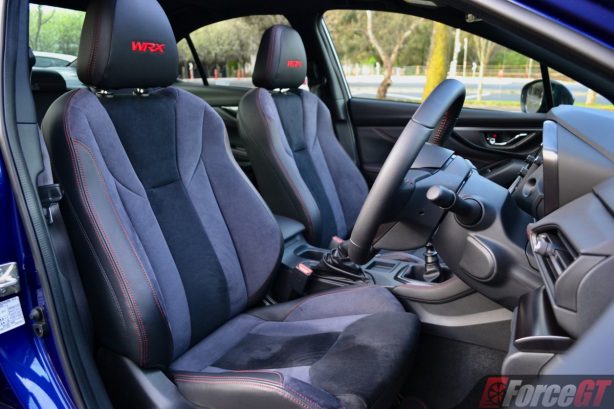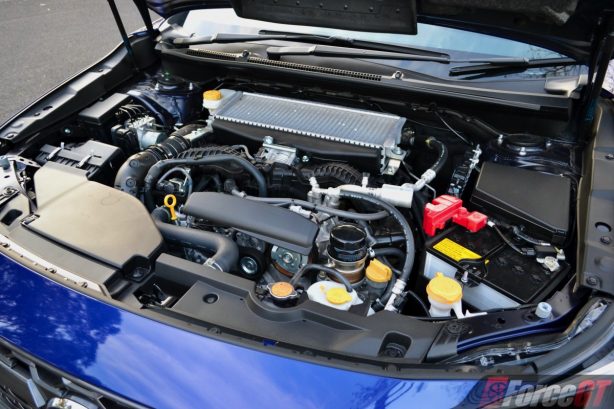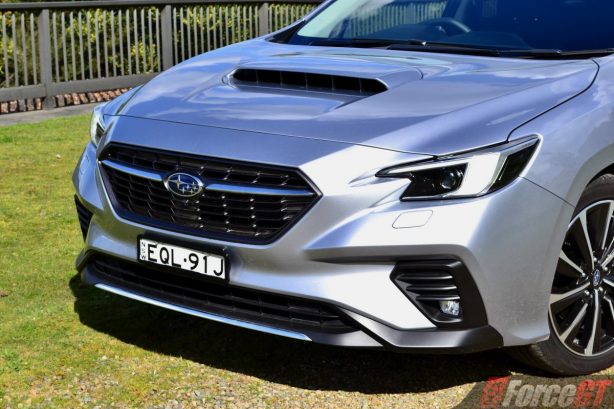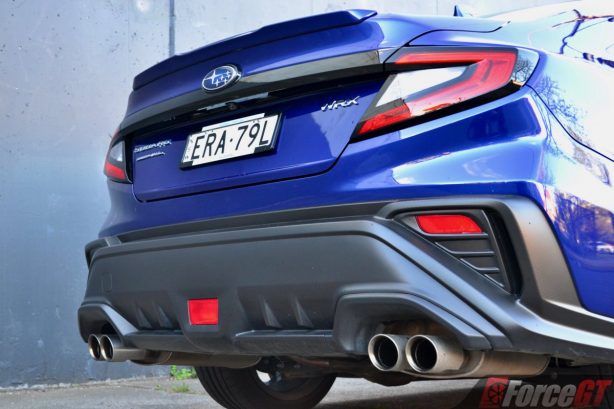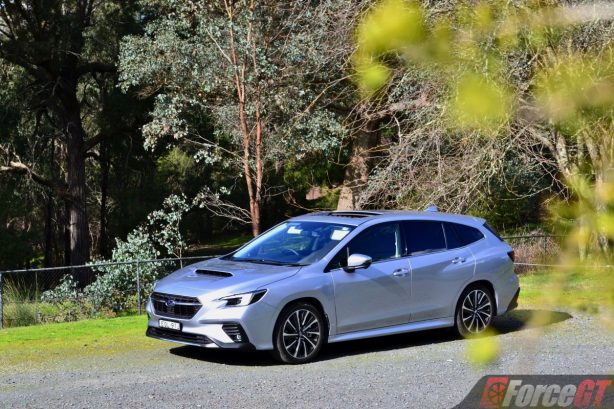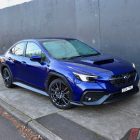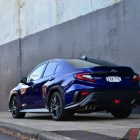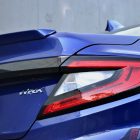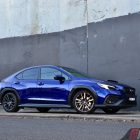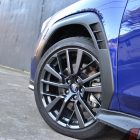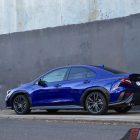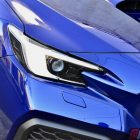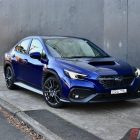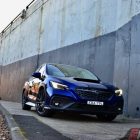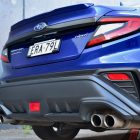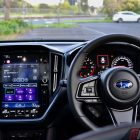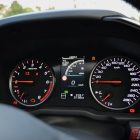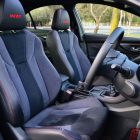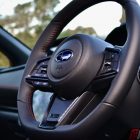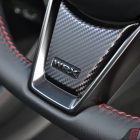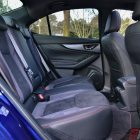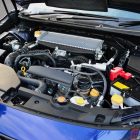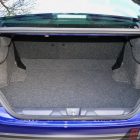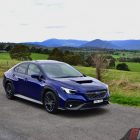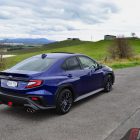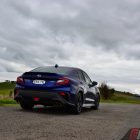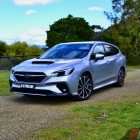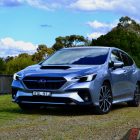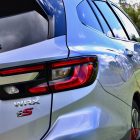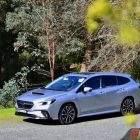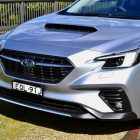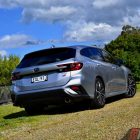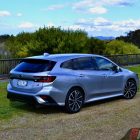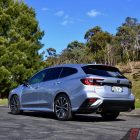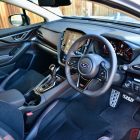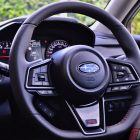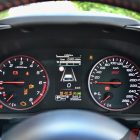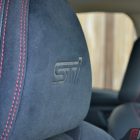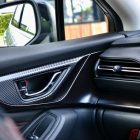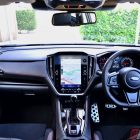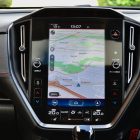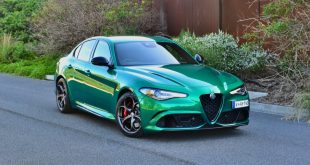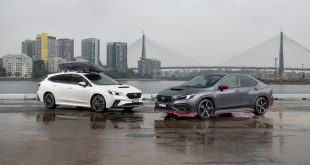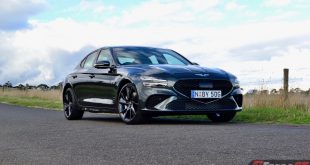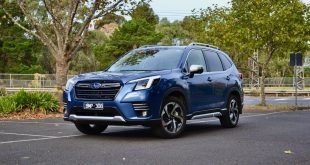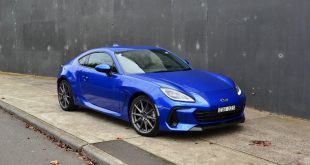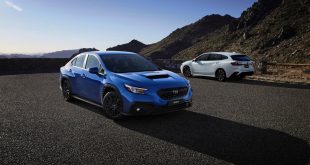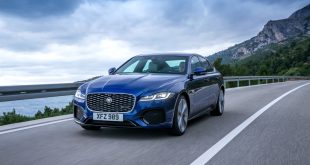WRX – three letters synonymous with high performance all-wheel drive motoring, burst out of Subaru’s assault on the world of rallying in the early 90s. An acronym for World Rally Experimental, WRX and the rally vehicles which bore the name stirred up a cult following after consecutive championship victories by Subaru. At the same time, road going, production versions of the WRX and WRX STI also tore up the streets with supercar beating performance.
It’s been over 30 years since the WRX project was launched in Japan in 1992. Today, its iconic status remains and amidst the global push for sustainable mobility, people’s thirst for the boxer rumble belted out by a turbocharged boxer engine seems as high as ever.
The latest fifth-generation WRX may satisfy those cravings but it’s speculated to be the last proper engine-powered WRX to do so before some sort of electrification is introduced.
Purists, this is your last chance.
The line-up
The new Subaru WRX range is the most comprehensive ever. It’s available in sedan and wagon body form, the latter replaces the old Levorg which was essentially a WRX wagon without the name.
The WRX Sedan is available in four variants – WRX, WRX Sport, WRX RS and WRX tS, with price ranging from $44,990 to $56,990.
The WRX Sportswagon comes in three variants – WRX Sportswagon, WRX Sportswagon GT and WRX Sportswagon tS. Fetching a slight premium over the sedan, the wagon is priced from $49,990 to $57,990. All prices exclude on-road costs.
Where’s the WRX STI? Unfortunately, the hardcore STI is not produced for this generation, with the go-fast division shifting its focus to developing the electrified powertrain for the next-gen STI. However, Subaru is expected to release an “STI-equipped” WRX variant in late 2023. This new range-topper will not have boosted performance, but garnished with various STI goodies like STI wheels, body panels and interior trim – some of those are already fitted to the Sportswagon tS on test here.
On the outside
The absence of an STI variant aside, the other major talking point about the new WRX is the styling. There’s no hiding the fact this new WRX looks a little confusing. We’re referring to the WRX sedan’s black cladding over those boxed wheel arches. Is the WRX trying to look like some sort of sedan-SUV crossover? Much of the answer can be found in the Viziv Performance concept on which the WRX design is based. Most of the styling elements, including the cladded wheel arches, have morphed onto the production WRX. However, the concept’s low slung, widened proportion did not make it across.
The new WRX styling is certainly not everyone’s cup of tea, but by the same token it’s undeniably unique and outgoing. Like all generations of WRXs before it, the new car looks tough. We reckon if the cladding and side skirts were colour-coded the thing would look even tougher. Perhaps Subaru is saving that for the STI-badged model?
The more angular design still has all the WRX hallmarks, namely the bonnet air scoop, pumped up wheel fenders and quad exhaust tips. All exterior lighting is LED and the alloy wheels measure 18-inch.
The WRX Sportswagon has a more restraint styling, with standard non-cladded wheel arches and toned down front and rear bumpers. There’re dual exhaust tips instead of the sedan’s quad tips.
On the inside
To us, the biggest step up – other than performance – in the new WRX is the interior. Immediately noticeable stepping into the new cabin is the much more premium vibe radiated by the totally redesigned dashboard and improved materials.
The highlight is the vertically orientated 11.6-inch centre touchscreen that is standard across the range. It allows intuitive touch, swipe and pinch operations similar to a smartphone or tablet. Apple CarPlay and Android Auto are supported, and satellite navigation is built-in.
The touchscreen is one of the best in the business, with a well thought out menu structure and quick load times. It’s flanked on either side by columns of buttons and knobs for important functions such as radio and volume control as well as ambient temperature adjustment.
The driving instrumentation cluster has not gone all digital yet, but expect this to come soon enough as hinted by the fully digital dash of the Japanese market WRX Sportswagon (still called Levorg over there).
Subaru makes some of the best seats in the industry and the ones in the WRX are no exception. The front sport bucket seats are both comfortable yet supportive. With red contrast stitching and WRX embroidery on the headrests, they look apart too.
The driving position isn’t the sportiest, as you sit rather high up, this is a sedan after all. That said, forward visibility is excellent, the flat bottom steering wheel is lovely to hold and the manual shifter feels slick and sporty.
As a sports compact, the WRX offers decent space for all occupants. Even the rear passengers get to have plenty of head and leg room. The middle rear passenger will have to put up with quite a large driveshaft hump, though, and there still aren’t any rear air-con vents.
Boot space for the sedan is listed as 414 litres – not the most spacious but slightly larger than most hot hatches. The wagon boasts a much larger 492 litres, expandable to 1,430 litres with the rear seats folded. If you need more practicality, the wagon is definitely the go.
Under the skin
The WRX boasts a newly-developed 2.4-litre turbocharged, horizontally-opposed Boxer engine delivering 202kW and 350Nm. The engine, which is shared with the turbo Outback, is currently the most powerful in the FA family of engines. In non-turbo form it also powers the BRZ.
WRX enthusiasts might be quick to point out that the new mill, despite being substantially larger in capacity over the old 2.0-litre unit, has not gained much in power – just 5kW over the previous 197kW, with torque figure staying the same.
But output figures don’t paint the full picture here, as Subaru claims that improved drivability and power delivery was the main focus. True that, as the new mill feels much stronger down low, thanks to maximum torque arriving at just 2,000rpm, 400 revs sooner than before, and hanging on until 5,200rpm.
There’s still that trademark shove-in-the-back acceleration, except that it’s punchier, harder and longer this time. The six-speed manual version accomplishes the 0-100km/h sprint in 6 seconds flat, three tenths of a second quicker than before, while the automatic stops the clock in 6.1 seconds.
Speaking of automatic, the WRX continues the use a continuously variable transmission (CVT) for its auto variants. Called the Subaru Performance Transmission, the new unit mimics a conventional 8-speed auto with “stepped” ratio and a manual mode. It can also blip the throttle on downshift. While it certainly breathes a new level of engagement for this type of transmission, there’s still no comparing with a dual clutch gearbox or fast-shifting torque converter auto.
Subaru’s symmetrical all-wheel drive again manages power sent to all four wheels, although things are slightly different this time. Manual WRX’s continue to utilise a conventional viscous limited-slip diff in the middle that evenly splits torque 50:50 front to rear. CVT models use a Variable Torque Distribution (VTD) unit that provides a 45:55 front to rear torque split. Both units can vary torque distribution to the front and rear tires in real-time to suit driving conditions.
On the road
With an upsized engine and an always active all-wheel drive system, the new WRX remains absolutely bulletproof around corners and in wet conditions. It’s one of those cars where you can confidently put the power down and extract all that the brilliant chassis has to offer.
The grip is tenacious, the response is sharp and the balance is exemplary. In manual guise, the WRX can be a lot of fun on a nice stretch of winding roads. The auto is far less engaging than the manual but there’s still good fun to be had if you had it in manual mode and changed “gear” using the steering wheel-mounted paddle shifters.
The WRX sedan’s prowess is known, but the Sportswagon’s handling really caught us by surprise. Heavier and longer than the sedan, the wagon’s dynamics are right up there with the sedan. Body control is excellent, with a superbly agile feel that totally befits its WRX badge.
Perhaps, where we were constantly crying out for more was in the aural department. There’s just a lack of that vicious, grumbling note that had been a WRX trademark from both the boxer engine and exhaust. That’s not to say that it doesn’t make a sound, it does but it’s far more toned down, far less raw.
We said the last generation WRX had grown up, this new one is now fully matured. Might as well, as Subaru says the customer base for WRX is maturing.
And it’s evident in the way the WRX rides as well. Subaru has dialled up the refinement and the new WRX provides a level of comfort not seen in previous models. The ride is less brittle and more quiet than before. A great effort from Subaru given the car sacrifices none of its handling performance.
The range-topping WRX tS variants are fitted with adaptive dampers and they ride even smoother in the softest setting. Even in the firmest Sport+ mode, the ride is compliant enough for the daily use.
The WRX Sportswagon tS we tested is genuinely a high performance wagon that is as practical as it is comfortable. It’s a refined cruiser that is good for soaking up the kilometres.
In the long run
The WRX Sedan manual we drove is thirstier than the Sportswagon automatic, recording an average of 10.3L/100km in our real world test against the rated 9.9L/100km. The CVT-equipped Sportswagon returned an average of 9.1L/100km against the official 8.5L/100km figure. Both drvietrains are less economical compared to key rivals, owing to its larger capacity engine.
The WRX is covered by Subaru’s standard five-year warranty with no limit on kilometre, while servicing intervals are scheduled for 12 months or 15,000km, whichever comes first. A complimentary one year roadside assistance is included.
Verdict
Design & Comfort
Performance & Handling
Quality
Economy
Equipment & Features
OUR SCORE
4.1/5
+ Plus
- Punchy 2.4L turbo engine
- Superb AWD handling
- Well presented interior
- Tough looks
– Minus
- Lack of aural sensation
- Thistier than rivals
- No STI variant
Overall
The 2023 Subaru WRX has to live up to and build on its three decades of racing and performance pedigree. Has it done so? At its core the WRX is still a highly capable, relatively affordable sports compact that brings good fun every time you drive it.
However, it has moved on somewhat. It’s more refined, more polished and more approachable. In the process of becoming so it has lost some of the raw emotion and rougher edges that used to define the WRX.
Whether this is good or bad depends on where you’re at in life. More mature drivers will welcome this transition, while younger enthusiasts may miss the old theatrics. For the latter group though, there’s nothing the aftermarket world can’t fix, especially for a WRX.
2023 Subaru WRX pricing and specifications
| Price (excluding on-road costs): | WRX Sedan Manual: $44,990 WRX Sedan Sport Lineartronic: $48,990 WRX Sedan RS Manual: $50,490 (tested) WRX Sedan RS Sport Lineartronic: $54,490 WRX Sedan tS Sport Lineartronic: $56,990 WRX Sportswagon Lineartronic: $49,990 WRX Sportswagon GT Lineartronic: $55,490 WRX Sportswagon tS Lineartronic: $57,990 (tested) |
| Warranty: | 5 years/unlimited km |
| Warranty Customer Assistance: | 1 year roadside |
| Service Intervals: | 12 months/15,000km |
| Country of Origin: | Japan |
| Engine: | Turbocharged 2.4-litre direct injection flat-four petrol: 202kW @ 5600rpm 350Nm @ 2000-5200rpm |
| Transmission: | 6-speed manual / CVT automatic with 8-speed manual mode |
| Drivetrain: | All-wheel drive |
| Power-to-Weight Ratio (W/kg): | 135.6 (Sedan); 125.7 (Sportswagon) |
| 0-100km/h (seconds): | Claimed: 6.0 (Sedan); 6.1 (Sportswagon) |
| Combined Fuel Consumption (L/100km): | Claimed: 9.9 (Sedan); 8.5 (Sportswagon) Tested: 10.3 (Sedan); 9,1 (Sportswagon) |
| RON Rating: | 95 |
| Fuel Capacity (L): | 63 |
| Body: | 4-door sedan / 5-door wagon; 5-seats |
| Safety: |
|
| Dimensions (L/W/H/W-B): | Sedan: 4,670/1,825/1,465/2,675 Sportswagon: 4,755/1,795/1,500/2,670 |
| Boot Space (min/max) (L): | 414 (Sedan) /492 (Sportswagon) |
| Kerb Weight (kg): | 1,490-1,607 |
| Entertainment: |
|
 ForceGT.com Car News, Car Reviews, Video Reviews, Tuning and much more.
ForceGT.com Car News, Car Reviews, Video Reviews, Tuning and much more. 